
Brigandine: Legend of Runersia is a turn-based strategy RPG for the Nintendo Switch. Produced as a limited run just like its predecessor Brigandine: Legend of Forsena (PSX), it was a title that was instantly hard to find. Thankfully, there is an option for digital download which is not subject to the same limitation that physical copies have. So if you're not a collector specifically looking for a physical copy, you're still able to very easily get this game through the online shop.
Now with that said - Buckle up. This is a complex game, and I've got a lot to show and say!
The overall goal of the game is total conquest. Unite the continent under the rule of your chosen faction, and in so doing (presumably) gain control of all 5 pieces of Brigandine.
At the start of the game, you select your faction out of the six that are available, which determines your starting position and the roster of characters you have available to you in the beginning.
For my first playthrough, I've chosen Norzaleo Kingdom. I picked this nation largely because based on my prior knowledge of the PSX game, the tile card for their nation suggested that they'd likely have only 2 or 3 entrances to defend:
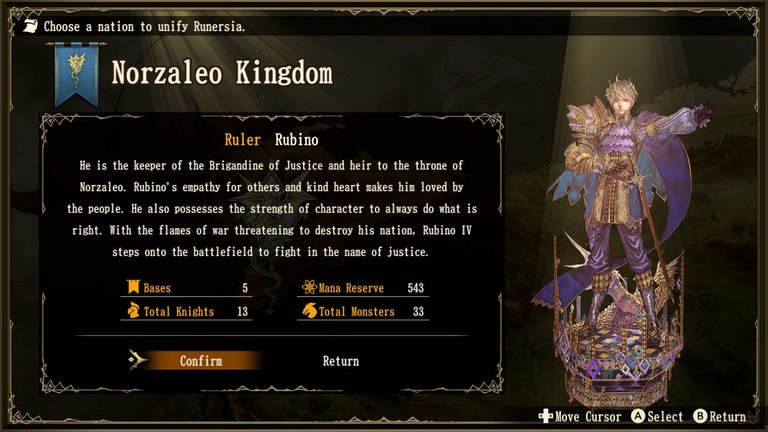
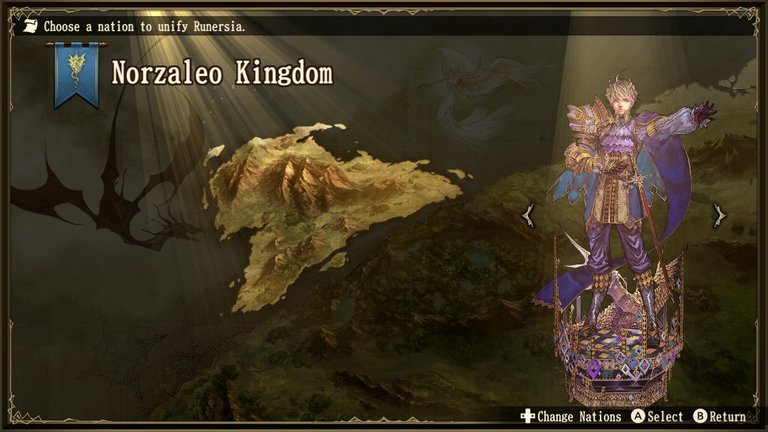
Upon choosing your nation, you get a brief storyline and cinematic setting up some background regarding your chosen faction, their Brigandine (or lack thereof), and of course a story hook for why your chosen leader is on the path to conquest.

Rubino recieves the Brigandine of Justice
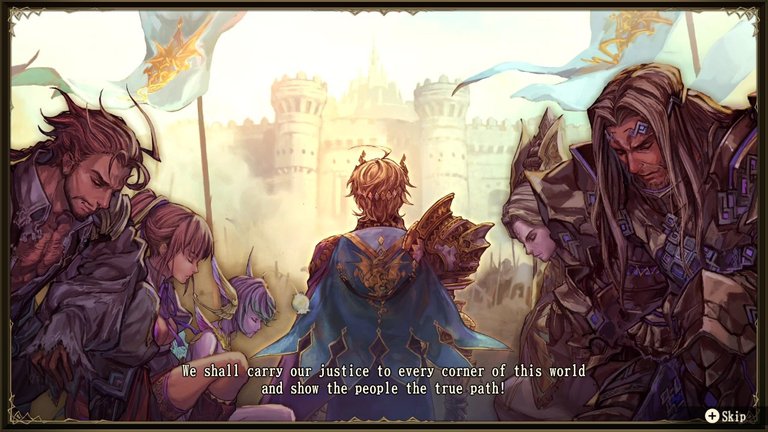
Now, some background on how the world itself works in Brigandine.
Runersia is a land that is bathed in 'Mana' - magic - and over time people learned how to harness this magic and use it in a variety of ways. These people are called Rune Knights, and a key feature of their power is the ability to summon and control monsters. Commoners without the power of Rune Knights also exist, though we don't directly interact with those people as players. Beyond that, however, there are also the legendary Brigandine; items that have one of five Rune Stones embedded in them and which grant powers far surpassing normal Rune Knights. Many many wars have been fought for control of these items.
Gameplay
The game is tracked in Years and Seasons and divides gameplay into two parts, the Organization Phase, and the Attack Phase. Seasons one organization phase and one attack phase. A year is made up of 24 Seasons. Higher levels of gameplay will limit you to a certain number of years to complete your conquest.

The Organization Phase of the game is where we can do the majority of our housekeeping tasks. In this phase, we can inspect the troops at any of our castles, summon monsters, move units, send Knights on quests, and view a castle's battleground layout.
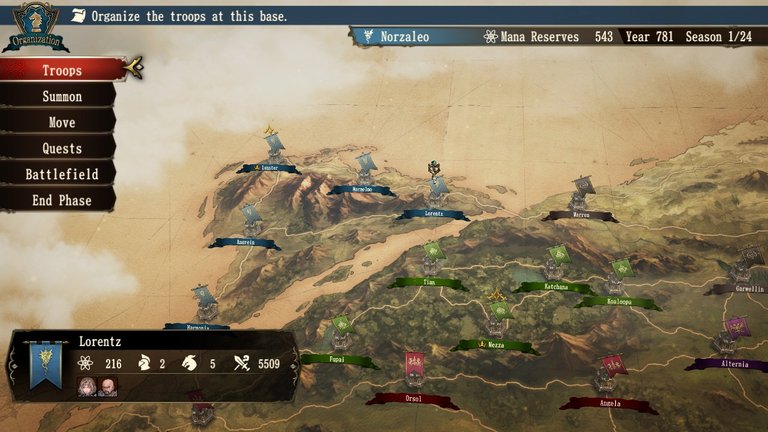
As seen above, we also have two useful HUDs. One tells us the total Mana Reserve available and the Year and Season, and the other is a hover-activated HUD that tells us some basic information about whatever castle our cursor is on. The hover-HUD tells us the name of the castle, how much mana upkeep its monsters cost, the total number of knights, the total number of monsters, and its overall combat power.
Troops
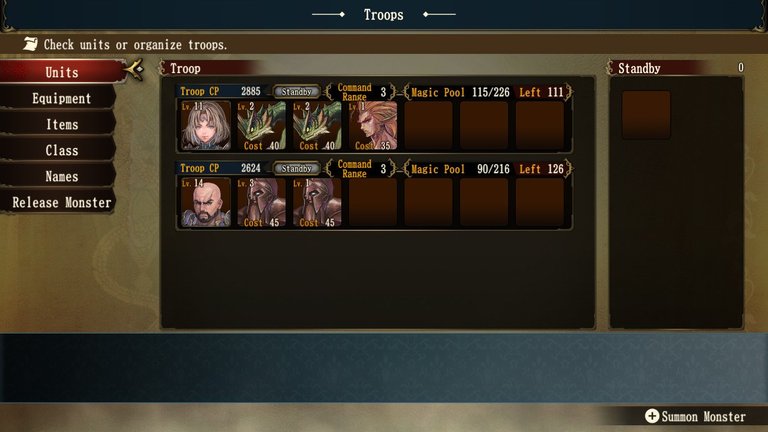
The Troops screen shows us our Rune Knights, the monsters in their party, and any available units not assigned to a Knight. From here we can also equip Rune Knights and Monsters weapons and armor, use items such as potions, change/upgrade classes for Knights and monsters, rename monsters, or release monsters entirely and send them back to the void they are summoned from.
Most of these screens aren't really worth showing via a screenshot, but the Units tab does let us see stats for both Knights and Monsters, which gives a PILE of information about them:
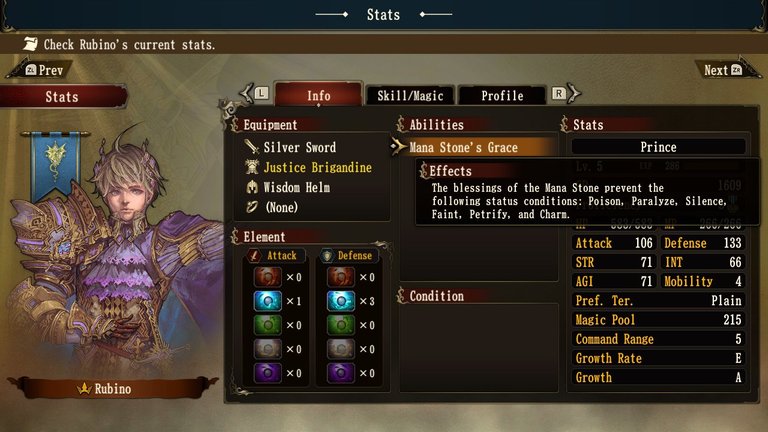
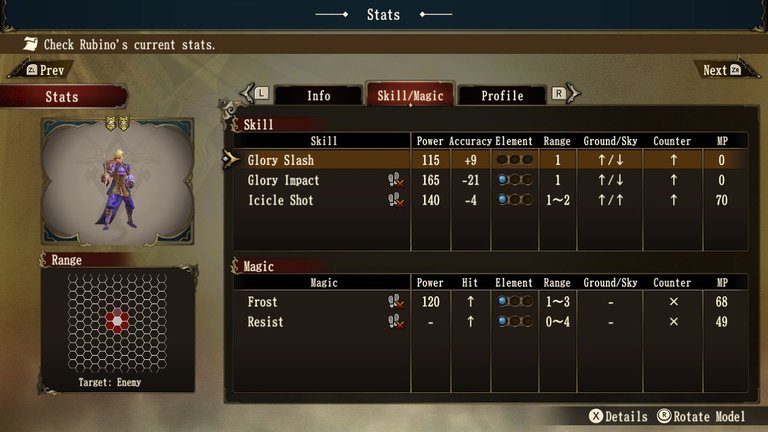
Also worthy of note, but something I won't spoil via screenshots is that there are a TON of upgrade paths for each type of Knight unit and Monster. For the most part, every type of class (Fighter, Knight, Cleric, Grappler, Wizard, etc) has 3 or more upgrades available to them, and with Knights you can generally switch to a new type whenever you want to. So if you want to take a Fighter and turn him into a Paladin, you can switch to a Knight and level up through that class tree until reaching Paladin.
Monsters are similar, but more linear in that they generally just a straight upgrade. Some - like Dragons - let you choose a subtype though. Dragons for example let you choose Frost, Fire, Acid, and a couple of other subtypes, which then changes what third teir type they become. Unit and monster upgrades are probably one of my favorite features of this game.
Summon
Each castle has a different set of monsters that are available to be summoned from it. Castle Lorentz for example lets us summon Unicorns, Clay Golems, and Wyverns. This screen shows us the base stats for each (which will be increased or decreased per individual summon), as well as the cost to summon them and upkeep them. We can also view their skills and magic from here, before we purchase them.

Quests
This is the last Organization screen that I feel is worth showing. As with summons, each castle has its own set of 3 quests that it provides as well. Different quests provide different potential rewards, and have different (hidden) requirements to completion. Depending on your Knight's class and level, your outlook will increase or decrease, and that in turn will affect the quality of item you return with.
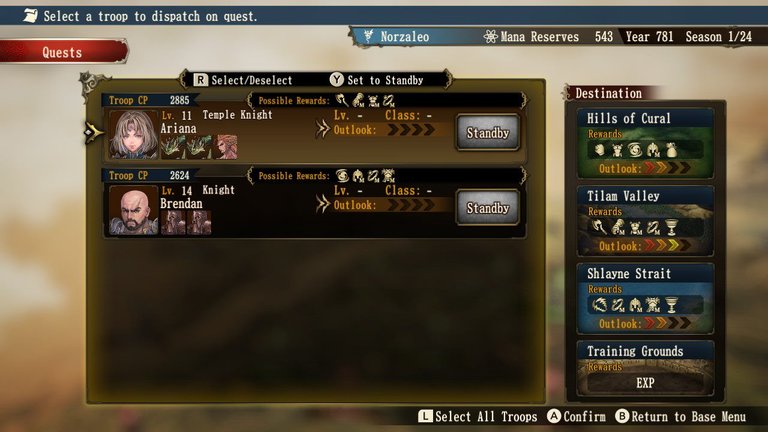
Of special note here is that Questing is one of the few ways to increase the number of Knights you have. There are a number of unaffiliated Rune Knights available in the world, and sometimes you'll return from a quest and receive a little cut-scene story telling of how the Knight you sent questing came across a new Rune Knight and convinced them to join your cause. From that point, your new Knight is available as an ally to assign monsters to and battle with.
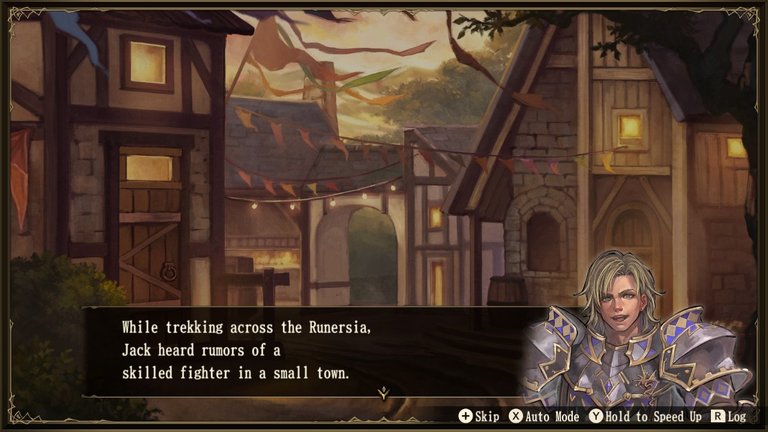
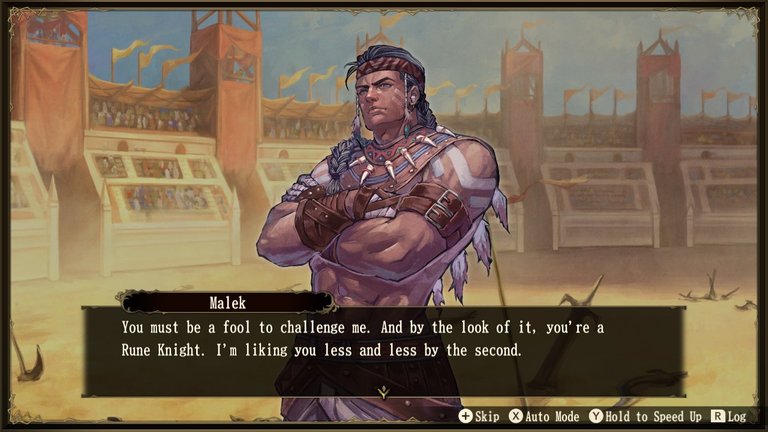
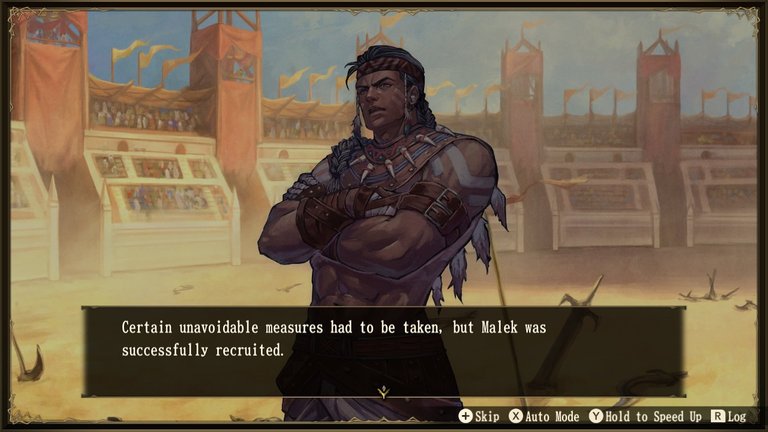
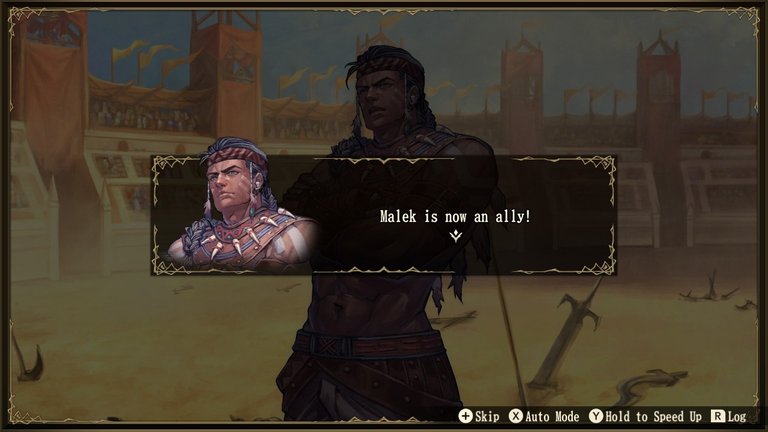
Equipment, consumables, and new Knights are each incredibly useful - so it's definitely worth sending anyone who isn't necessary for holding your borders on quests.
Now, I'm going to skip over the Move and Battlefield options. Move is exactly what you'd expect - you move units between castles, and Battlefield simply shows you where units will spawn in during a battle. Spawn points are fixed, and depend on what castle the attacker is sending from. You'll see this in action in the Attack Phase, which we will cover next.

This phase is - as the name applies - all about attacking. It allows us a second chance to look at enemy units, as well as what monsters can be summoned in an enemy base and what quests are available there... all before we even own it! And, crucially, allows you to choose to invade and which Knights to send.
Invading sends us to the Battle Map, which is a hex-based grid system on which our Knights and Monsters are placed.
Defending units always spawn around the castle token on the grid, as one of the win-conditions is to take and hold an enemy castle. Attackers spawn in along the edge of the map, in relation to the direction their castle is. So if I'm attacking a castle to my south, my troops will generally spawn along the northern side of the map. Each unit has its own movement speed, represented by the white hexes on the grid.
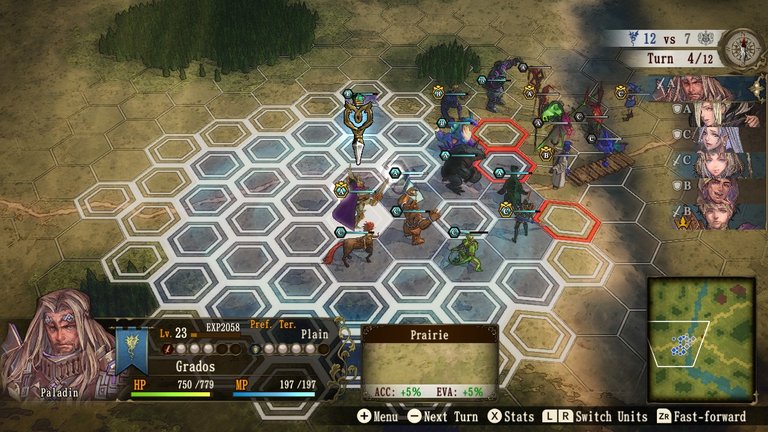
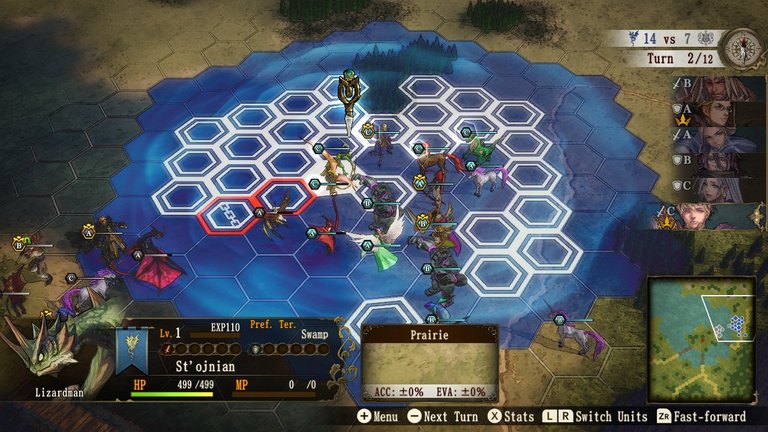
The blue highlighted area is our Rune Knight's zone of control. Outside of this area, our Knight's monsters are weaker, less evasive, and more likely to be left behind if your knight has to retreat.
Once in battle, the name of the game is basically to converge upon the enemy and wipe out their monsters and/or leaders. Killing an enemy leader will automatically force any of their monsters to retreat when the leader is vanquished, so a strategy for a quick win is to focus fire on Rune Knights.

Can we nuke them with a Frost bolt? ...Not quite.
The red area in this gif shows us the range of our attacks / spells. In this example, I'm checking he range of Rubino's spell Frost. Every unit in the game has multiple skills and/or spells available to them. There are basically three types of skills/spells - there are attacks like Frost that are a single-target spell or skill, there are area-of-affect spells that will affect all units within the spell range, and then there are line-attacks such as breath weapons and rays.
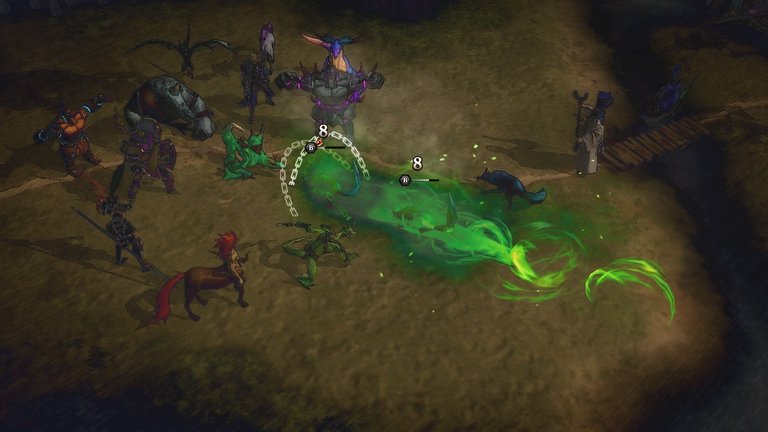
Our Green Dragon using it's acid breath attack, which is a line-effect hitting up to 3 monsters in a row
Every action earns us a small amount of EXP for the unit, but if one of our attacks manages to land the final blow on a monster or an enemy Rune Knight, you get a substantially larger EXP boost, so a strategy I like to use if available is to get the last hit on a weak creature with a unit I'm actively working to upgrade.
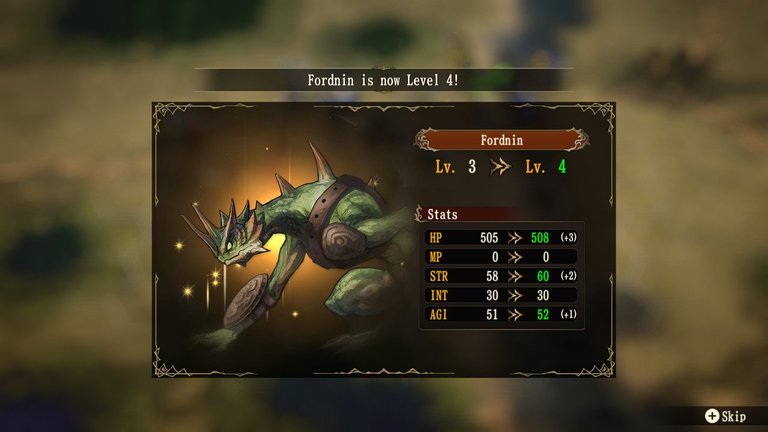
Fordnin, our loyal Lizardman unit, gets a level up!
If we've managed to level up to the point where a new class change is available, a popup is shown telling us what we can upgrade to:
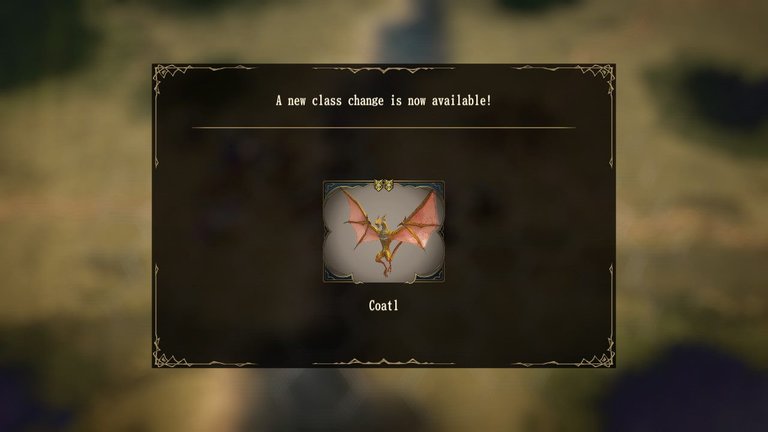
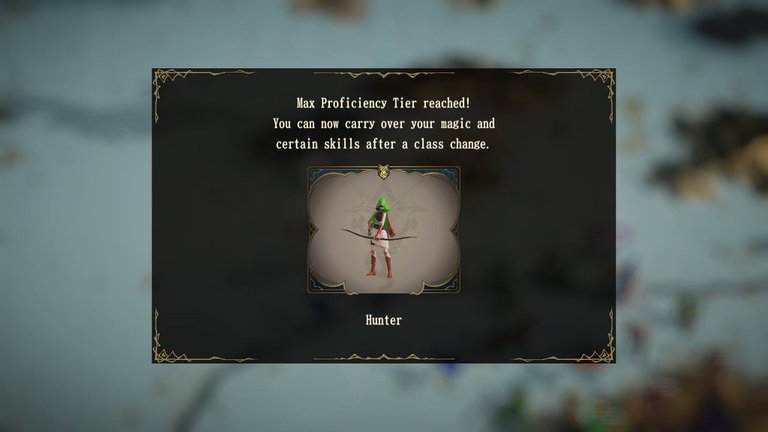
Win or lose, when a character has been routed or chose to retreat, there's a chance (based on battlefield and unit conditions) that one of their summoned creatures will be left behind - as we see here, where I capture an enemy green dragon.
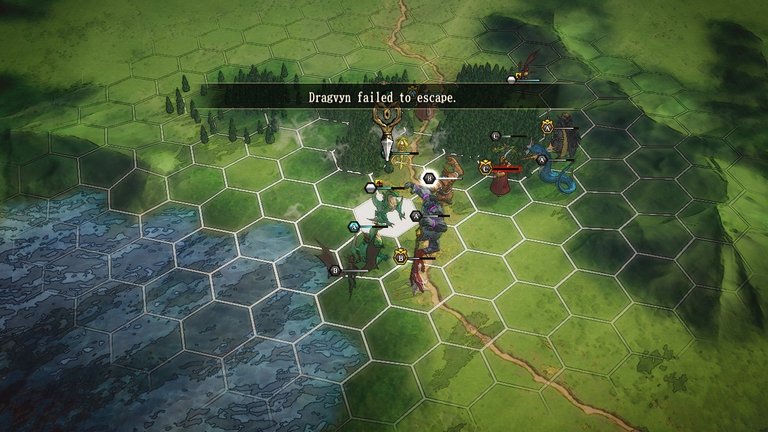
Capturing units can be incredibly useful as they retain both their level, and any equipment they were wearing. In the PSX Brigandine, a go-to strategy I abused was to attempt to force captures by turning enemy units to stone or paralyzing them after they'd been weakened, surrounding them with my own units as much as possible, and then knocking out their leader. This wasn't a sure-fire way to get a new unit, but it greatly increased the chances - and I'm willing to bet this game take the same things into consideration. If you can pull it off, this is a great way to cheese your way to a top-teir monster very early in the game, since every nation starts with a few very high level monsters.
That basically covers the important bits of the attack phase and the battle map itself. Win or lose, we get a results screen giving us a breakdown of who won, what their total combat power was, and what units were lost in the battle.

Once all of our invasion and defense actions are complete, the season increments and we begin it all over again - hopefully with a new castle and some new units to show for all our work.
My Opinion
Now, that brings us to my opinion of this game. I have said for many many years that Brigandine: Legend of Forsena for the PSX was my favorite game of all time. Finding it and owning it was something I was very proud of... and I have to say, Brigandine: Legend of Runersia has not only met, but exceeded, all of my expectations for a sequel. The areas in which Brigandine for the PSX were weak have been improved and ironed out, and the quality of life improvements and gameplay updates such as being able to put equipment on monsters is a remarkable addition to the game. Monsters are more balanced than they were in the previous game, and overall Brigandine: Legend of Runersia has succeeded in keeping everything I loved about Forsena and improving upon it.
This was, unquestioningly, worth my choice to buy a Switch for this single game. If you are a fan of turn-based RPGs, and you have a Nintendo Switch - I urge you to buy this game via the digital download. I know that I will be spending a long time playing this title, and I hope that my review of it here has helped put it on some of your radars.
I've been pretty interested in picking up this game, seems right up my alley in style and taste! I've been put off by the high pricing though... Happy to wait a while to see if it comes down a bit.
Digital might drop in price at some point, or you may get lucky during a sale. Physical will almost certainly only go up in price. Definitely worth waiting on a good sale for though.
May I give a contrasting opinion?
This game, I played the demo on Switch. Something about the game felt a bit hollow to me.
I enjoyed the visuals, voices/sounds/music, the leveling options, the phased turns, and the battles.
The main characters felt a bit stale to me. Oh look, another aristocrat playboy. Maybe if I level him up, he'll have a special storyline vignette. Unicorns, dragons, and mermaids are kind of cool in the game, but I also felt like they were just sort of thrown in for no reason.
Sometimes when a game allows for such open-ended gameplay choices to drive the storyline, it waters down every part of it.
Being a long-time RPG and Strategy RPG player, this game felt more like a board game with miniatures to me. Almost like Heroes Quest, because the characters can level up, but far too many character pieces to become invested into each character's success.
However, I did like the fact that each kingdom was at least given a theme. The Paladins, the Magicians, The Bards, The Barbarians, etc.. I really wanted to play the Bardic kingdom, but it wasn't allowed in the Demo.
Thats an entirely fair criticism. The character depth was something the last one also had as a weakness... for me, the other features make up for the weak character stories, as that has always been fluff to me in these games. But again, I definitely can agree with your sentiment!
That's one hell of a review, in depth and deep. Is it on any other platform besides the Switch? I do like these kinds of tactical games. I will go and have a look.
Sadly it is exclusive to the Switch, at least at present. I suspect that a port to other platforms is fairly unlikely. And thank you!
RPG is not my kind of game, but this one looks very nice.
It is honestly much more tactics oriented than rpg. Its very fun!
Congratulations @oblivioncubed! You have completed the following achievement on the Hive blockchain and have been rewarded with new badge(s) :
You can view your badges on your board and compare yourself to others in the Ranking
If you no longer want to receive notifications, reply to this comment with the word
STOP